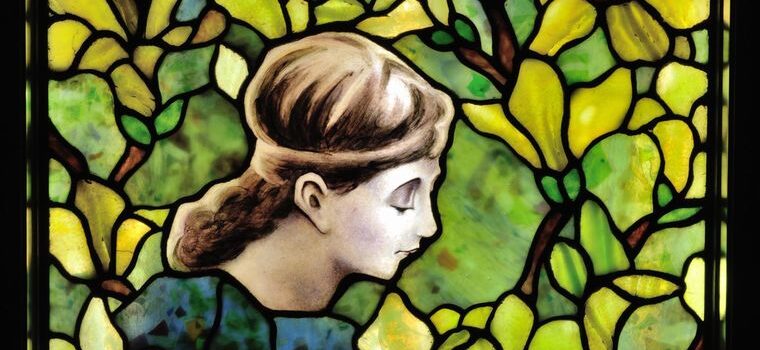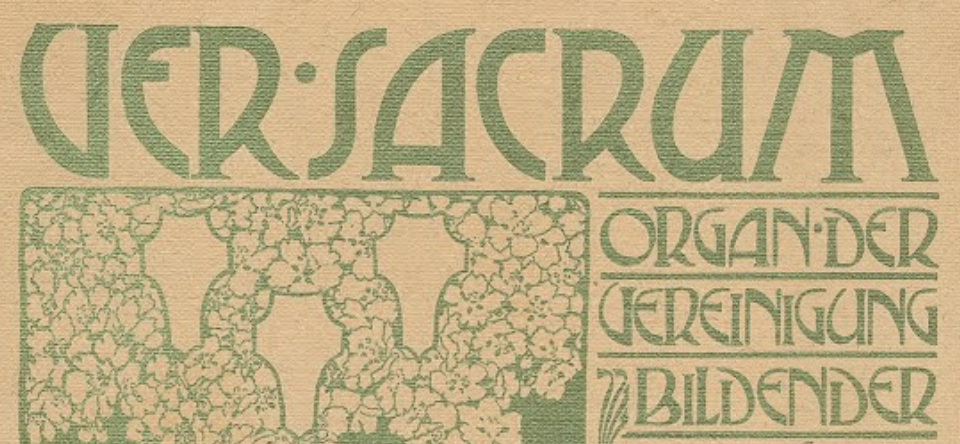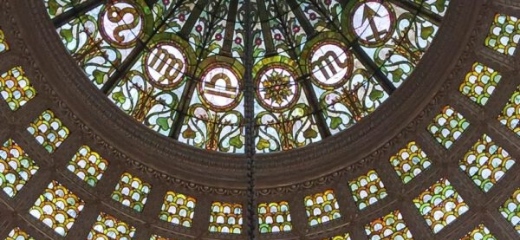Art Deco is a distinctive design movement that emerged in the early 20th century, characterized by bold geometric shapes, vibrant colors, and luxurious materials. It flourished particularly during the 1920s and 1930s, influencing architecture and interior design across Europe and beyond. For American travelers seeking a deeper appreciation of this architectural style, several European cities stand out as prime destinations due to their rich collections of Art Deco structures, cultural significance, and historical contexts that shaped this iconic movement. Cities such as Bucharest, Paris, and Nice are celebrated not only for their impressive architectural heritage but also for their ability to integrate Art Deco into their modern identity. Bucharest, known as “Little Paris,” boasts notable examples such as the Telephone Palace, while Nice features iconic buildings along the Promenade des Anglais that embody the glamour of the era. Meanwhile, Paris is revered as the birthplace of Art Deco, showcasing landmarks like the Palais de Tokyo that reflect the movement’s luxurious essence. These cities exemplify how Art Deco has been embraced and preserved, enhancing their cultural landscapes and attracting design enthusiasts from around the world.
The selection of the top ten European cities for Art Deco design considers several criteria, including cultural impact, architectural diversity, and accessibility for visitors. Cities were evaluated based on their historical significance to the Art Deco movement, the range of architectural styles represented, and the availability of resources for travelers to explore this rich heritage. Notable inclusions like Valencia and Berlin demonstrate a blend of historical and modern interpretations of the style, showcasing how these cities have fostered appreciation for Art Deco architecture while ensuring that it remains an integral part of their urban fabric.
Prominent controversies surrounding the preservation of Art Deco architecture often arise from the tensions between modernization and heritage conservation. As urban environments evolve, there is ongoing debate about the balance between preserving historical sites and accommodating contemporary development. These discussions highlight the significance of Art Deco as not just an aesthetic choice, but as a reflection of cultural identity and historical memory, further underscoring its importance for travelers and architects alike.
Criteria for Selection
Cultural Impact
The cultural impact of Art Deco designs within a city’s artistic and social fabric is another vital criterion. Cities that not only possess notable Art Deco architecture but also celebrate it through museums, festivals, or cultural events received higher consideration. The ability of these cities to integrate Art Deco aesthetics into their modern identity, thereby fostering an appreciation for this design movement, is crucial. For instance, Valencia’s City of Arts and Sciences exemplifies how modern structures can harmoniously coexist with historical styles, thus enhancing the city’s cultural landscape.
Architectural Diversity
One of the primary criteria for selecting the best European cities for Art Deco design is the architectural diversity showcased within each city. Cities were evaluated based on their range of Art Deco structures, including commercial buildings, residential properties, and public monuments. Notably, cities like Barcelona feature a mixture of architectural styles that incorporate the bold and decorative elements characteristic of Art Deco, while also presenting a vibrant historical context that enhances their appeal to art enthusiasts.
Historical Significance
The historical significance of Art Deco in each city also plays a crucial role in the selection process. Cities that were pivotal in the development and popularization of the Art Deco movement were prioritized. For instance, cities such as Paris and New York, which were instrumental in shaping Art Deco architecture through landmark constructions like the Chrysler Building and the Palais de Chaillot, are recognized for their contribution to the style’s legacy and its ongoing influence on contemporary architecture.
Accessibility and Visitor Experience
Accessibility for travelers is a practical criterion for selection. Cities that offer a conducive environment for exploring Art Deco sites—through guided tours, well-preserved neighborhoods, and informative resources—were favored. The ease of movement within these cities and the availability of tourist amenities contribute significantly to the overall visitor experience, making destinations like Florence particularly appealing to art lovers.
Representation of the Art Deco Style
Lastly, the representation of the Art Deco style itself—including the use of characteristic materials, geometric shapes, and ornamentation—was assessed. Cities that feature a high concentration of authentic Art Deco buildings that embody the style’s defining characteristics, such as the use of metals, glass, and vibrant decorative motifs, were prioritized. This includes iconic examples like the Anzac Memorial in Sydney and Radio City Music Hall in New York, which exemplify the grandeur and decorative spirit of the Art Deco movement.
Top 10 European Cities for Art Deco Design
Art Deco, characterized by its bold geometric shapes, vibrant colors, and luxurious materials, emerged in the early 20th century and quickly spread across Europe, influencing architecture and design in numerous cities. Here are the top ten European cities that showcase exceptional Art Deco architecture and design.
Brussels and Paris are arguably the most visited Art Deco cities in Europe and the two destinations where we most frequently organize private tours. Their rich architectural heritage, world-renowned landmarks, and vibrant artistic scenes make them top choices for Art Deco enthusiasts. While Porto is one of our main destinations, it is not typically ranked among the top 10 Art Deco cities in Europe by experts, so we do not include it in this particular selection.
Brussels features a variety of Art Deco structures, notably in the city’s municipal buildings and residential neighborhoods. The city is known for its unique interpretation of Art Deco, often incorporating elements of local styles and designs. Key examples include the Flagey Building and various residential blocks throughout the city.
Brussels, the capital of Belgium, is a notable destination for Art Deco architecture, showcasing a unique blend of modernity and traditional craftsmanship that emerged in the aftermath of World War I. The Art Deco movement, characterized by its geometric shapes, bold colors, and luxurious materials, gained prominence in the city during the 1920s and 1930s, reflecting societal aspirations for renewal and accessibility in design. Key figures such as Victor Horta and Josef Hoffmann significantly influenced this artistic period, resulting in landmark structures that have come to define the city’s architectural landscape.
Among Brussels’ most iconic Art Deco buildings are the Villa Empain, the Basilica of Koekelberg, and the Stoclet Palace, each exemplifying the era’s distinct features and cultural significance. The Villa Empain, designed by architect Michel Polak, is renowned for its opulent design, while the Basilica stands as the largest Art Deco church globally, representing the boldness of the style. The Stoclet Palace is celebrated for its exquisite materials and intricate detailing, further solidifying Brussels’ status as a premier Art Deco destination.
As the city prepares to commemorate the centenary of the International Exposition of Modern Decorative and Industrial Arts in 2025, Brussels is renewing its commitment to preserving and promoting its Art Deco heritage. This initiative includes extensive programming, such as exhibitions and guided tours, aimed at engaging both locals and tourists in the rich history of the movement. Local officials emphasize the importance of this celebration in enhancing cultural identity and fostering a connection between the community and its architectural legacy.
Despite the decline of Art Deco following World War II, Brussels has successfully retained a wealth of preserved structures that continue to attract architecture enthusiasts and cultural tourists. The ongoing restoration efforts and the anticipated Art Deco Year 2025 highlight the city’s dedication to showcasing this influential movement, which remains a vital aspect of Brussels’ artistic narrative and urban identity.
In preparation for the upcoming Art Deco Year 2025, Brussels aims to establish itself as a key destination for art enthusiasts and cultural tourists. This initiative is part of a broader effort to celebrate the centenary of the influential Art Deco movement, building on the success of the Art Nouveau Year 2023.
The Art Deco 2025 programme, curated by Paul Dujardin, seeks to engage with diverse themes such as heritage access, public space design, contemporary architecture, and the challenges of decolonisation, aiming for a cross-disciplinary approach within the constraints of available resources. The city plans to offer a variety of guided tours showcasing its unique Art Deco heritage, which ranges from discreet details to monumental structures. These tours will provide opportunities for visitors to discover and rediscover the architectural treasures scattered throughout the streets of Brussels.
The initiative also coincides with the 2025 World Congress on Art Deco, which will celebrate the centennial of the 1925 Exposition Internationale des Arts Décoratifs et Industriels Modernes, the event that catalyzed the global spread of the Art Deco style. With these efforts, Brussels hopes not only to highlight its rich architectural heritage but also to foster a deeper appreciation of art and design among both residents and tourists alike, setting the stage for a vibrant cultural year ahead.
As the birthplace of Art Deco, Paris is filled with iconic structures that exemplify the movement’s grandeur. The Palais de Tokyo and the Théâtre des Champs-Élysées are prime examples of the style’s impact on the city’s architectural landscape, embodying the luxury and elegance associated with the Art Deco era.
Art Deco is a distinguished architectural and design movement that flourished in Paris during the early 20th century, particularly in the vibrant “années folles” or “Roaring Twenties.” Characterized by bold geometric shapes, rich colors, and luxurious materials, Art Deco marked a departure from the organic forms of its predecessor, Art Nouveau, and reflected a society eager for modernity and innovation following World War I. The movement gained global prominence during the 1925 Exposition Internationale des Arts Décoratifs et Industriels Modernes, which showcased a wide array of innovative designs that defined the era and solidified Paris as a central hub for Art Deco creativity.
The influence of Art Deco is evident in numerous iconic landmarks throughout Paris, including the Palais de Chaillot and the Théâtre des Champs-Élysées. These structures embody the movement’s emphasis on elegance and grandeur, attracting tourists who seek to experience the historical and aesthetic value of the city. Moreover, the movement’s reach extended beyond France, significantly impacting architectural styles in North America, particularly in cities like New York and Miami, where Art Deco motifs continue to be celebrated. This enduring legacy draws visitors from around the world to explore Paris’s rich tapestry of Art Deco architecture, making it a notable destination for art and design enthusiasts.
Despite its celebrated history, the Art Deco movement has faced scrutiny over its ties to colonialism, particularly in structures like the Palais de la Porte Dorée, originally built for the 1931 Colonial Exposition. This complexity invites ongoing discussions regarding cultural representation and the narratives embedded within the city’s architectural landscape. As tourists navigate Paris, they can engage with both the celebrated and contentious aspects of Art Deco, enriching their understanding of this vibrant period in the city’s history.Art Deco emerged as a significant artistic movement in the early 20th century, particularly flourishing in Paris during the “années folles” or “Roaring Twenties.” The movement was characterized by its embrace of modernity and the optimism that followed World War I, reflecting a society eager for change and innovation.
A pivotal moment for the Art Deco movement was the 1925 Paris Exhibition, officially known as the Exposition Internationale des Arts Décoratifs et Industriels Modernes. This exhibition played a crucial role in defining Art Deco, showcasing approximately 130 buildings and around seventy-five pavilions that exemplified the integration of modern materials and mass production techniques in design. The exhibition highlighted the style’s signature elements, including straight lines, symmetry, and the use of luxurious materials, which collectively embodied the social and technical revolutions of the time.
Prominent figures associated with the movement included furniture designers Jacques Ruhlmann and Maurice Dufrène, metalsmith Jean Puiforcat, and glass designer René Lalique, all of whom contributed significantly to the aesthetic of Art Deco.Tourists should be aware that international expositions, such as those historically held in Paris, serve as condensed versions of world tourism, showcasing highlights of global culture. Understanding the purpose of these events can help tourists appreciate the significance of various attractions.
When exploring the city, be strategic in choosing which spots to visit, prioritizing those that offer unique experiences or showcase art deco architecture.Many visitors overlook the covered passages of Paris, which provide charming shopping and dining experiences away from the bustling streets. Passages such as Galerie Véro-Dodat are highly rated and worth the visit for their elegance and luxurious ambiance. However, some passages may remain closed or less accessible, so it’s beneficial to check their status ahead of time. By being guided by an excellent private guide, US and international tourists can navigate Paris more effectively, enjoy its art deco charm, and create lasting memories.
3. Valencia, Spain
Valencia is home to a rich architectural heritage, with several impressive Art Deco buildings that exemplify the style’s international influence. The city’s architecture features an eclectic mix of design elements, with significant structures like the Edificio de La Unión y el Fénix Español showcasing the distinct characteristics of Art Deco.
4. Amsterdam, Netherlands
Amsterdam’s Art Deco offerings include a variety of residential buildings and public spaces that exhibit the style’s sleek lines and decorative motifs. The city’s architectural landscape is enhanced by the Amsterdam School movement, which complements the geometric and modernist elements of Art Deco, creating a unique blend of styles.
5. London, England
London features numerous examples of Art Deco architecture, from residential buildings to iconic commercial spaces. Key sites include the Daily Express Building and the Florin Court, showcasing the bold lines and elaborate detailing typical of the style. The city’s diverse neighborhoods host a variety of Art Deco gems, reflecting its rich architectural tapestry.
6. Bucharest, Romania
Bucharest, often referred to as “Little Paris,” boasts a rich collection of Art Deco buildings that symbolize its cultural and economic prosperity during the interwar period. Notable structures include the Telephone Palace, which was Romania’s first building with a steel structure, and the ArCub arts center, known for its elongated windows and porthole-like features.
7. Berlin, Germany
Berlin’s Art Deco architecture is marked by a distinctive flair that combines modernity with historical references. The city’s skyline includes notable buildings such as the iconic KDF-Wagen Factory and the renowned Hotel Adlon. Berlin’s Art Deco heritage is a testament to its vibrant cultural history during the 1920s and 1930s.
8. Kaunas, Lithuania
Kaunas is recognized for its impressive collection of Art Deco buildings, particularly in its city center. The architecture reflects a unique blend of modernist influences and traditional motifs, with structures such as the Vytautas the Great War Museum and various residential buildings showcasing the elegance of the style.
9. Nice, France
Nice emerged as a glamorous holiday destination in the 1920s, featuring a stunning array of Art Deco architecture along its famous Promenade des Anglais. Notable buildings include the Palais de la Mediterranée and various residential structures adorned with elaborate details. The city’s design reflects the elegance of the era, attracting many stars of cinema and society.
10. Moscow, Russia
Moscow’s Art Deco scene is characterized by its bold architecture and elaborate detailing, with notable buildings like the Gorky Central Park Pavilion and various cinemas that capture the spirit of the era. The city’s Art Deco influences are reflected in both public and private architecture, offering a glimpse into the artistic movements of the early 20th century. These cities not only showcase the architectural beauty of Art Deco but also reflect the cultural and historical contexts that shaped this iconic style, making them must-visit destinations for design enthusiasts and travelers alike.
Cultural Events Influencing Art Deco Architecture
Art Deco architecture emerged in the early 20th century, significantly influenced by a series of cultural events and socio-economic conditions. This modernist movement, which flourished particularly during the 1920s and 1930s, was deeply rooted in the desire to represent progress and modernity while simultaneously beautifying the ordinary and mass-produced.
The Exposition Internationale des Arts Décoratifs et Industriels Modernes
A pivotal moment in the history of Art Deco was the 1925 Exposition Internationale des Arts Décoratifs et Industriels Modernes held in Paris. This exhibition showcased innovative designs and solidified Art Deco’s status within the decorative arts. The event allowed artists and architects to present their works that embraced geometric forms, ornate patterns, and vibrant colors, marking a departure from the more intricate styles of Art Nouveau that preceded it.
Socio-Economic Conditions
The Art Deco period was shaped by the contrasting socio-economic landscapes of its time. The opulence of the 1920s, exemplified by lavish speakeasies and the Jazz Age, gave way to the stark realities of the Great Depression. This duality influenced the architectural aesthetic, which blended high-impact beauty with elements that reflected the simpler, more utilitarian needs of society. As a result, Art Deco buildings often featured rich ornamentation and elaborate designs, yet were constructed using modern materials that reflected the industrial advancements of the era.
Historical Context
The historical events surrounding World War I and World War II also played a significant role in shaping Art Deco architecture. The aftermath of these conflicts brought about a sense of renewal and a longing for stability, prompting a shift towards designs that conveyed strength and resilience. Furthermore, the impact of these wars fostered a new appreciation for modernism and the embrace of industrial materials like steel and aluminum in architectural designs, further entrenching the Art Deco style in the fabric of the time.
Design Elements in Art Deco Architecture
Art Deco architecture is renowned for its distinctive design elements that reflect modernity, luxury, and artistic flair. Emerging in the early 20th century, this style incorporates various geometric shapes, ornate decorations, and a vibrant use of color, creating an iconic aesthetic that has influenced urban landscapes across Europe and beyond.
Geometric Shapes and Patterns
At the heart of Art Deco design lies the use of geometric shapes, which includes triangles, circles, and zigzags. These forms are often utilized to create dramatic patterns that evoke a sense of order and precision. For instance, the repeated motifs found in building facades and doorways showcase the style’s penchant for symmetry and balance. The incorporation of geometric designs not only adds visual interest but also conveys a sense of movement and dynamism, a reflection of the era’s advancements in technology and society.
Symmetry and Balance
Symmetry is a fundamental characteristic of Art Deco architecture. Buildings typically feature balanced proportions and harmonious compositions, with facades often exhibiting symmetrical layouts. This balanced aesthetic creates a sense of visual stability and order, contributing to the overall elegance of the structures. Ornate details are frequently arranged in a way that reinforces this symmetry, enhancing the luxurious feel of the architecture.
Vertical Design Elements
Many Art Deco buildings emphasize verticality, showcasing soaring spires and tall structures that reach skyward. This vertical emphasis is achieved through architectural techniques such as stepped setbacks and elongated windows, which draw the eye upward and symbolize progress and ambition. Iconic examples include the Chrysler Building and the Empire State Building, both of which epitomize the Art Deco style with their towering forms and decorative details.
Ornate Decoration
Art Deco architecture is distinguished by its lavish ornamentation, which reflects the sophistication and luxury of the time. Buildings are often adorned with intricate carvings, bas-reliefs, and stylized motifs inspired by various sources, including ancient cultures and nature. Common decorative elements include sunbursts, zigzags, and chevrons, which not only embellish the surfaces but also reinforce the geometric themes present throughout the design.
Use of Color and Materials
Color plays a crucial role in Art Deco architecture, with vibrant and saturated palettes being a hallmark of the style. Deep greens, golds, and metallic finishes are frequently employed both on exteriors and interiors, contributing to the opulent atmosphere associated with Art Deco design. Furthermore, the use of luxurious materials such as polished wood, chrome, and glass enhances the overall aesthetic, creating an impression of sophistication and modernity.






